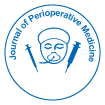
Journal of Perioperative Medicine
Open Access
ISSN: 2684-1290

ISSN: 2684-1290
Commentary - (2025)Volume 8, Issue 1
Perioperative care represents a complex interplay of clinical decision-making, timely interventions and individualized patient risk assessment. Traditionally, risk stratification in the perioperative period has relied on static scoring systems like the American Society of Anaesthesiologists (ASA) classification, the Revised Cardiac Risk Index and surgical complexity scores. While these tools provide a valuable foundation, they are often limited by their inability to account for dynamic and non-linear interactions between comorbidities, medications, surgical types and intraoperative events. In recent years, high-income countries have witnessed a growing interest in integrating Artificial Intelligence (AI) into perioperative medicine to overcome these limitations and enhance predictive accuracy. AI-based tools particularly those using Machine Learning (ML) and Deep Learning (DL) algorithms offer an adaptive and scalable approach to risk prediction. These systems can process vast quantities of heterogeneous data, including Electronic Health Records (EHR), vital signs, lab values, imaging and even free-text clinical notes. By identifying subtle patterns and correlations, AI tools can provide real-time, personalized risk estimates that exceed the capabilities of traditional models.
In practice, AI-based perioperative risk models are being developed to predict a wide range of outcomes, including postoperative complications, ICU admission, unplanned readmissions, surgical site infections and even mortality. For example, machine learning algorithms trained on multi institutional EHRs have demonstrated strong predictive performance in identifying patients at risk for postoperative sepsis, a complication often missed until clinical deterioration becomes evident. These tools can flag high risk patients early, allowing for proactive management strategies, such as rehabilitation, optimization of comorbidities and customized anaesthesia planning. Several academic centres and health systems in high income countries have already begun integrating AI-driven risk stratification tools into clinical workflows. In the United States, institutions like Stanford and Mayo Clinic have pioneered the development of perioperative dashboards powered by predictive analytics. Similarly, in the UK and Canada, national efforts to digitize perioperative care have accelerated the use of AI in surgical planning and resource allocation.
However, the implementation of AI in perioperative care is not without challenges. First, model interpretability remains a significant barrier. Many advanced ML models function as “black boxes,” making it difficult for clinicians to understand how risk predictions are derived. Efforts to incorporate explainable AI (XAI) frameworks are ongoing, but user trust is still evolving. Second, data quality and standardization are critical concerns. Discrepancies in how data is recorded across hospitals or countries can impact model performance and generalizability. Ethical concerns also merit attention. Biases present in training data such as underrepresentation of minority populations or patients with complex comorbidities can lead to inaccurate predictions and unintended disparities in care. High income countries must prioritize equity focused AI design, ensuring that risk tools serve diverse populations without reinforcing systemic biases.
Moreover, clinical adoption requires cultural and organizational shifts. Successful integration of AI tools demands cross disciplinary collaboration among clinicians, data scientists and health IT teams. Training programs, change management strategies and strong clinical governance frameworks must be in place to ensure that AI enhances, rather than disrupts, perioperative decision-making. Despite these challenges, the potential of AI to revolutionize perioperative care is undeniable. The growing body of evidence supporting AI-based risk stratification suggests that these tools can not only improve patient outcomes but also optimize resource utilization, reduce costs and support population health management. Importantly, AI does not replace clinical judgment it augments it, providing an additional layer of insight that enables more informed, datadriven decisions.
As surgical care becomes increasingly complex, the need for accurate, real-time risk assessment is more urgent than ever. AIbased tools for perioperative risk stratification represent a transformative advancement in modern medicine. Their ability to synthesize large volumes of clinical data and generate personalized risk profiles offers an opportunity to elevate perioperative care to new standards of precision, safety and efficiency. However, realizing this potential requires careful attention to ethical design, accurate validation and meaningful clinical integration. In high income countries where digital infrastructure is strong and healthcare data is abundant, the foundation for AI-driven perioperative care is already in place. Moving forward, a collaborative, transparent and patient centred approach will be essential to harness the full benefits of these technologies ensuring they improve outcomes not just for some, but for all.
Citation: Reynolds AM (2025). Development of AI-Based Tools for Perioperative Risk Stratification. J Perioper Med. 8:261.
Received: 05-Feb-2025, Manuscript No. JPME-25-37971; Editor assigned: 07-Feb-2025, Pre QC No. JPME-25-37971 (PQ); Reviewed: 22-Feb-2025, QC No. JPME-25-37971; Revised: 02-Mar-2025, Manuscript No. JPME-25-37971 (R); Published: 09-Mar-2025 , DOI: 10.35248/2684-1290.25.8.261
Copyright: © 2025 Reynolds AM. This is an open-access article distributed under the terms of the Creative Commons Attribution License, which permits unrestricted use, distribution, and reproduction in any medium, provided the original author and source are credited.